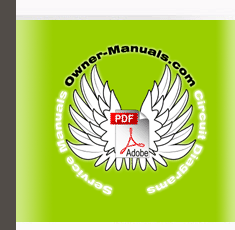There are currently no product reviews.

;
This was a hard to find manual. When I did find it , some sites wanted way too much for the file.
Owner-manual .com had it for a really reasonable price. Not only that but it was sent very quickly and was a quality scanned document, unlike some others I purchased from a different site.
Good job guys!!
Larry

;
Fast and courteous service. Product delivered as described. Thank you.

;
Last week I bought a second hand Panasonic AG-7500 SVHS Hi-Fi Video Cassette Recorder. It is a professional machine with many video and audio options. I feared it would be a huge quest to find a manual. I was delighted when I found owner-manuals.com. After payment I received the file to download the next day already. The quality is great. I am very happy. Thanks!

;
The owner's manual/operating instructions that I purchased was the original factory document and it was in at least three and maybe more languages. I no longer have it because I sold the tape recorder and included the owner's manual/operating instructions and a service/repair manual that I bought on ebay for the new owner.

;
This manual is very useful. Because pioneer sx-q180 is unhandy to use without manual.
s5000/ s6000
RECORDING SAMPLES FOR USE WITH A PLAYSHEET
NEW FEATURES
No special requirements. However, as they are always played out on C3 within the playsheet, it�s probably best to record everything at C3.
CREATING PROGRAMS FOR USE WITH A PLAYSHEET
Because the playsheet is only playing one note (C3), multi-sampling is not an issue and multiple keygroups need only be used when stacking samples on top of each other. For a simple sound effect, just one keygroup spanning the entire keyboard range with the one sample it need be used. Alternatively, you could set the keygroup�s keyspan to C3 - C3. As mentioned, ideally, all samples should be recorded on C3 so that they play at their proper pitch. If you are loading existing samples from disk and they are playing at the wrong pitch, they should be edited in EDIT SAMPLE to have an original pitch of C3. Of course, alternatively, you can always re-tune them within the program itself but this means that every program that uses XYZ sample needs to be retuned - if XYZ sample is tuned in EDIT SAMPLE to C3, any program that uses won�t need to be tweaked. And talking of tuning, a program can contain stacked keygroups and these may be detuned against each other for a variety of effects. For example, create an instant flange effect simply by stacking a sample on top of itself and using keygroup or zone fine tune to set the depth of the effect or create dramatic thunder cues by layering three thunder samples on top of each other, detuning two for a flange effect and tuning one down an octave to add menacing rumble. The sound design fun doesn�t stop there! Use the amplitude envelope to create fade in and fade outs or to crossfade between one cue and other. You can use the filters to create dramatic tonal changes - for example, use a bandpass filter to create a telephone quality voice effect. Samples may also be panned anywhere in the stereo image for wide stereo effects - you can even modulate pan to move a sound around. Samples may also be routed to individual outputs so that they may be balanced and effected on an external mixing console. All this and you haven�t even touched the EB20 effects yet!
CREATING A MULTI TO USE AS A PLAYSHEET
Creating a multi for use as a playsheet does not have any special considerations other than only the first ten parts are used. Apart from that, parts (which will be cues in the playsheet) can be mixed, panned, sent to individual outputs, tuned, etc., as normal.
Version 1.30
19
